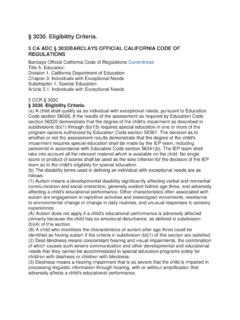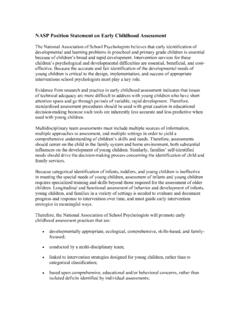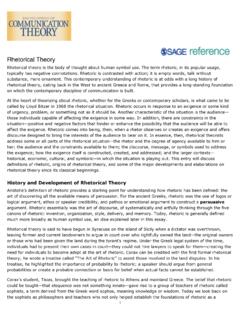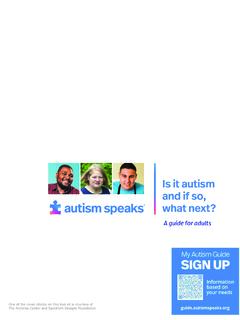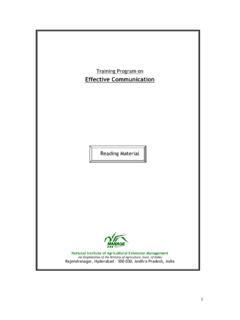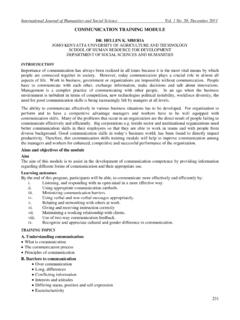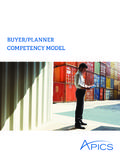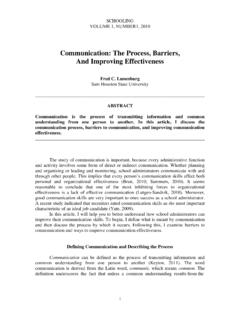Transcription of § 3030. Eligibility Criteria. - CASPOnline
1 3030. Eligibility Criteria. 5 CA ADC 3030 BARCLAYS OFFICIAL CALIFORNIA CODE OF REGULATIONS Barclays Official California Code of Regulations Currentness Title 5. Education Division 1. California Department of Education Chapter 3. Individuals with Exceptional Needs Subchapter 1. Special Education Article Individuals with Exceptional Needs 5 CCR 3030 3030. Eligibility Criteria. (a) A child shall qualify as an individual with exceptional needs, pursuant to Education Code section 56026, if the results of the assessment as required by Education Code section 56320 demonstrate that the degree of the child's impairment as described in subdivisions (b)(1) through (b)(13) requires special education in one or more of the program options authorized by Education Code section 56361.
2 The decision as to whether or not the assessment results demonstrate that the degree of the child's impairment requires special education shall be made by the IEP team, including personnel in accordance with Education Code section 56341(b). The IEP team shall take into account all the relevant material which is available on the child. No single score or product of scores shall be used as the sole criterion for the decision of the IEP team as to the child's Eligibility for special education. (b) The disability terms used in defining an individual with exceptional needs are as follows: (1) Autism means a developmental disability significantly affecting verbal and nonverbal communication and social interaction, generally evident before age three, and adversely affecting a child's educational performance.
3 Other characteristics often associated with autism are engagement in repetitive activities and stereotyped movements, resistance to environmental change or change in daily routines, and unusual responses to sensory experiences. (A) Autism does not apply if a child's educational performance is adversely affected primarily because the child has an emotional disturbance, as defined in subdivision (b)(4) of this section. (B) A child who manifests the characteristics of autism after age three could be identified as having autism if the criteria in subdivision (b)(1) of this section are satisfied.
4 (2) Deaf-blindness means concomitant hearing and visual impairments, the combination of which causes such severe communication and other developmental and educational needs that they cannot be accommodated in special education programs solely for children with deafness or children with blindness. (3) Deafness means a hearing impairment that is so severe that the child is impaired in processing linguistic information through hearing, with or without amplification that adversely affects a child's educational performance.
5 (4) Emotional disturbance means a condition exhibiting one or more of the following characteristics over a long period of time and to a marked degree that adversely affects a child's educational performance: (A) An inability to learn that cannot be explained by intellectual, sensory, or health factors. (B) An inability to build or maintain satisfactory interpersonal relationships with peers and teachers. (C) Inappropriate types of behavior or feelings under normal circumstances. (D) A general pervasive mood of unhappiness or depression.
6 (E) A tendency to develop physical symptoms or fears associated with personal or school problems. (F) Emotional disturbance includes schizophrenia. The term does not apply to children who are socially maladjusted, unless it is determined that they have an emotional disturbance under subdivision (b)(4) of this section. (5) Hearing impairment means an impairment in hearing, whether permanent or fluctuating, that adversely affects a child's educational performance but that is not included under the definition of deafness in this section.
7 (6) Intellectual disability means significantly subaverage general intellectual functioning, existing concurrently with deficits in adaptive behavior and manifested during the developmental period that adversely affects a child's educational performance. (7) Multiple disabilities means concomitant impairments, such as intellectual disability-blindness or intellectual disability-orthopedic impairment, the combination of which causes such severe educational needs that they cannot be accommodated in special education programs solely for one of the impairments.
8 Multiple disabilities does not include deaf-blindness. (8) Orthopedic impairment means a severe orthopedic impairment that adversely affects a child's educational performance. The term includes impairments caused by a congenital anomaly, impairments caused by disease ( , poliomyelitis, bone tuberculosis), and impairments from other causes ( , cerebral palsy, amputations, and fractures or burns that cause contractures). (9) Other health impairment means having limited strength, vitality, or alertness, including a heightened alertness to environmental stimuli, that results in limited alertness with respect to the educational environment that.
9 (A) Is due to chronic or acute health problems such as asthma, attention deficit disorder or attention deficit hyperactivity disorder, diabetes, epilepsy, a heart condition, hemophilia, lead poisoning, leukemia, nephritis, rheumatic fever, sickle cell anemia, and Tourette syndrome; and (B) Adversely affects a child's educational performance. (10) Specific learning disability means a disorder in one or more of the basic psychological processes involved in understanding or in using language, spoken or written, that may have manifested itself in the imperfect ability to listen, think, speak, read, write, spell, or do mathematical calculations, including conditions such as perceptual disabilities, brain injury, minimal brain dysfunction, dyslexia, and developmental aphasia.
10 The basic psychological processes include attention, visual processing, auditory processing, sensory-motor skills, cognitive abilities including association, conceptualization and expression. (A) Specific learning disabilities do not include learning problems that are primarily the result of visual, hearing, or motor disabilities, of intellectual disability, of emotional disturbance, or of environmental, cultural, or economic disadvantage. (B) In determining whether a pupil has a specific learning disability, the public agency may consider whether a pupil has a severe discrepancy between intellectual ability and achievement in oral expression, listening comprehension, written expression, basic reading skill, reading comprehension, mathematical calculation, or mathematical reasoning.
